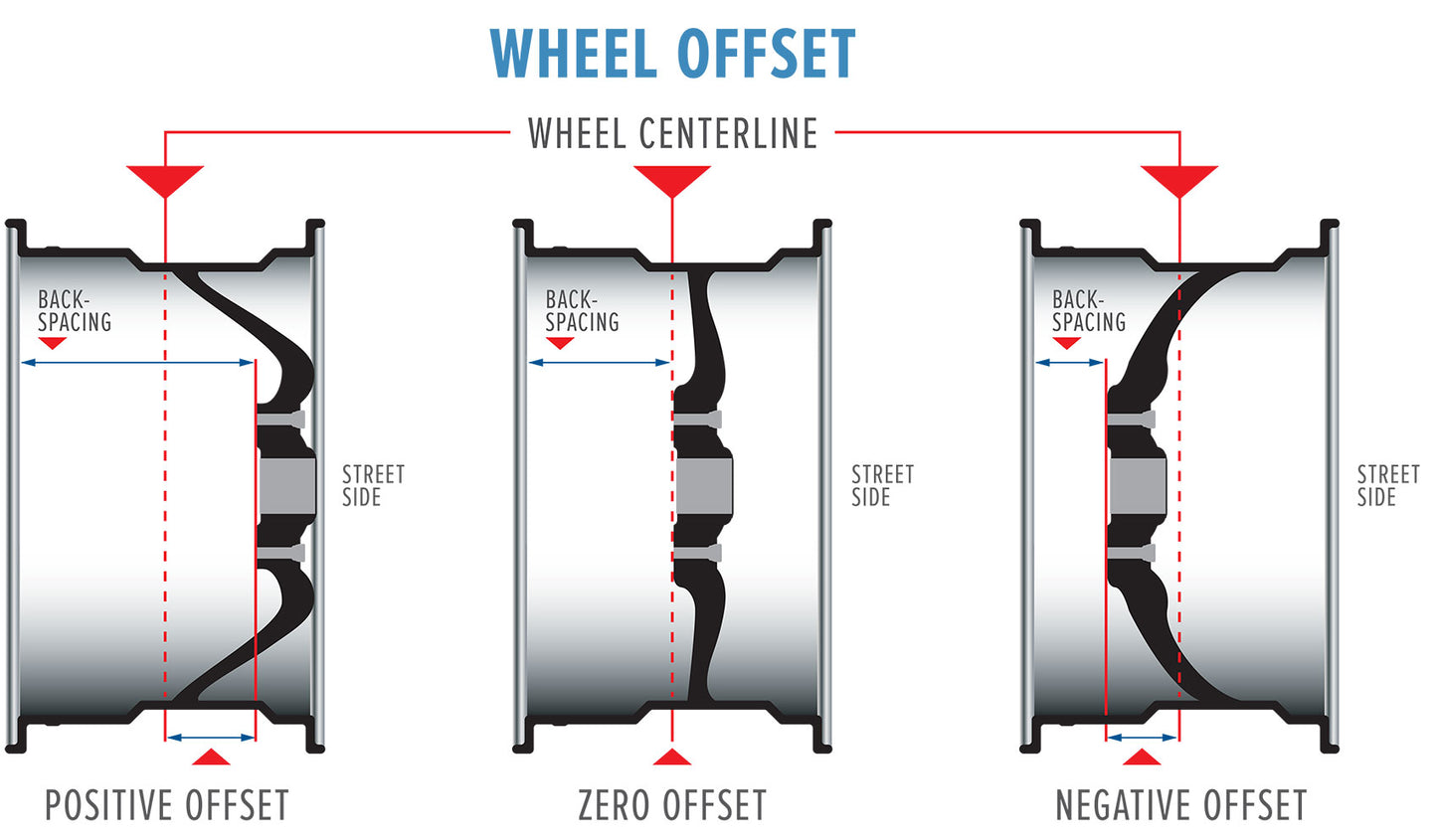
What is Wheel Backspacing?
Wheel backspacing is a crucial measurement that determines how your wheels and tires fit on your vehicle. It's the distance, measured in inches, between the mounting surface of the wheel (where it attaches to the vehicle's hub) and the innermost lip of the wheel.
Why is Backspacing Important?
- Proper Fitment: The right backspacing ensures your wheels don't rub against your vehicle's suspension components, brakes, or fenders.
- Performance and Handling: Backspacing affects your car's track width (the distance between the left and right tires), which can impact stability, cornering, and overall handling.
- Appearance: Backspacing influences how far your wheels and tires stick out from the fenders, giving your vehicle a particular look.
High Backspacing vs. Low Backspacing:
- High Backspacing: Wheels with high backspacing sit further inward, closer to the suspension components. This can provide more inner clearance but might limit tire size options.
- Low Backspacing: Wheels with low backspacing sit further outward, often giving a more aggressive look. However, they might require modifications to avoid rubbing issues.
How to Measure Backspacing:
- Lay the wheel face down on a flat surface.
- Place a straightedge across the back of the wheel.
- Measure the distance between the straightedge and the mounting surface of the wheel. This measurement is your backspacing.
Things to Remember:
- Offset and Backspacing: Backspacing and offset are related but different measurements. Offset is the distance between the wheel's centerline and its mounting surface, measured in millimeters. They both affect fitment, but backspacing is more commonly used for aftermarket wheels.
- Consult Experts: If you're unsure about the correct backspacing for your vehicle, consult with a wheel and tire specialist. They can help you choose the right fitment for your needs.
I hope this explanation clarifies the concept of wheel backspacing. Feel free to ask if you have any further questions!
